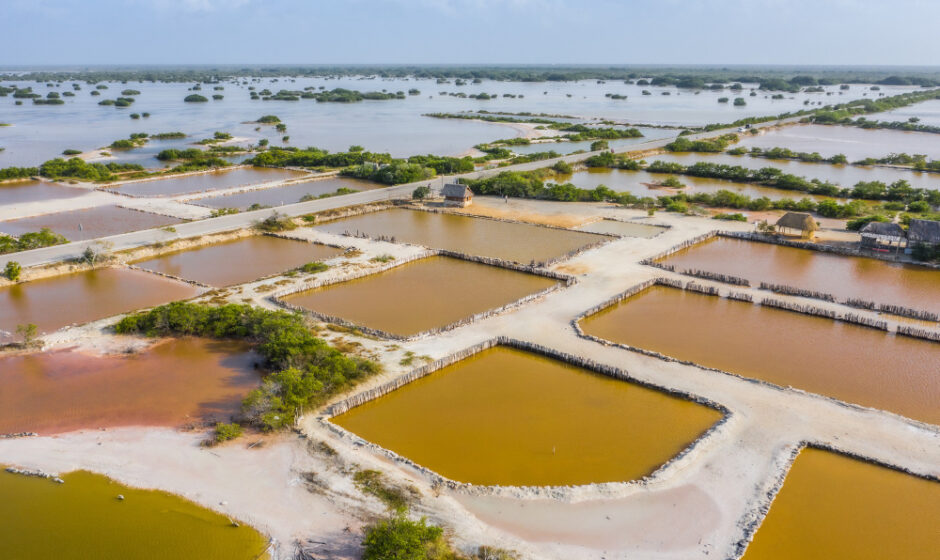Integrated Multi-Trophic Aquaculture (IMTA) farming is poised to revolutionize the lives of Thoothukudi fishermen, offering them a sustainable and profitable livelihood option.
The ICAR-Central Marine Fisheries Research Institute (CMFRI) has taken a significant step towards empowering Thoothukudi fishermen by launching Integrated Multi-Trophic Aquaculture (IMTA) farming in Tsunami Nagar and Pullaveli along the Thoothukudi coast. Funded by the NABARD, this project aims to double the income of fishermen by integrating fish farming with seaweed and bivalve (mussels and oysters) cultivation.
At the heart of IMTA lies the concept of creating a harmonious ecosystem within a sea cage. Fingerlings of Asian Sea Bass, a commercially valuable species, are integrated with green mussels (filter feeders) and red seaweeds (Kappaphycus alvarezii). This symbiotic relationship ensures efficient nutrient cycling and waste reduction, mimicking the natural environment.
The IMTA technology utilizes a six-meter diameter sea cage constructed from HDPE pipes or galvanized iron. The inner net is divided into two compartments using a hapa net, which serves as a temporary nursery for fingerlings during their initial growth phase. The outer net provides protection from predators.
Over 1,000 Asian Sea Bass fingerlings, measuring 8 to 12 cm in length, can be stocked in a single cage. For the first one to two months, the fingerlings are fed a pallet feed (artificial feed) within the hapa net. Once they reach a certain size, the hapa net is removed, allowing the fingerlings to roam freely within the inner net. Harvesting of the fish occurs at the end of the eighth month.
Mussels, known as ‘chippi’ locally, are cultivated using a rope-based technique, preventing them from scattering. The rope is strategically placed between the inner and outer nets, allowing for effective utilization of the available space. Up to 16 ropes can be accommodated within the narrow confines of the sea cage.
Red seaweeds, another integral component of IMTA, are grown on bamboo rafts positioned close to the sea cage. The monoline method is employed for seaweed cultivation, ensuring optimal growth and productivity.
The IMTA methodology creates a self-sustaining ecosystem within the sea cage. The excreta produced by the fingerlings serves as a nutrient source for the mussels and seaweeds. This organic matter decomposes into various forms, providing nourishment for the mussels, which in turn filter the water, removing phytoplankton. The red seaweeds absorb both organic and inorganic substances, further purifying the water.
The IMTA technology offers significant advantages for both the environment and the fishermen. The mussels yield a remarkable 3-4 folds increase in biomass within 30 days, while red seaweeds exhibit a 4-6 folds growth, providing substantial additional income for the fisherfolk.
Moreover, each Asian Sea Bass grown in the sea cage is expected to weigh between 1.25 kg and 1.50 kg after eight months, fetching a minimum market price of ₹400 per kg. Sea bass is a prized export commodity, particularly in Southeast Asian and other foreign markets.
Dr L Ranjith, a CMFRI scientist, emphasizes the IMTA’s role in environmental stewardship. “IMTA is an efficient system that helps control both organic and inorganic pollution in natural open waters, ensuring ecological balance,” he explains.
The IMTA technology presents a beacon of hope for Thoothukudi fishermen, offering them a sustainable and profitable livelihood option. By integrating fish farming with seaweed and bivalve cultivation, fishermen can diversify their income sources and enhance their economic stability. The project’s success will undoubtedly serve as a model for IMTA adoption in other coastal regions, fostering a more resilient and environmentally conscious aquaculture industry.


